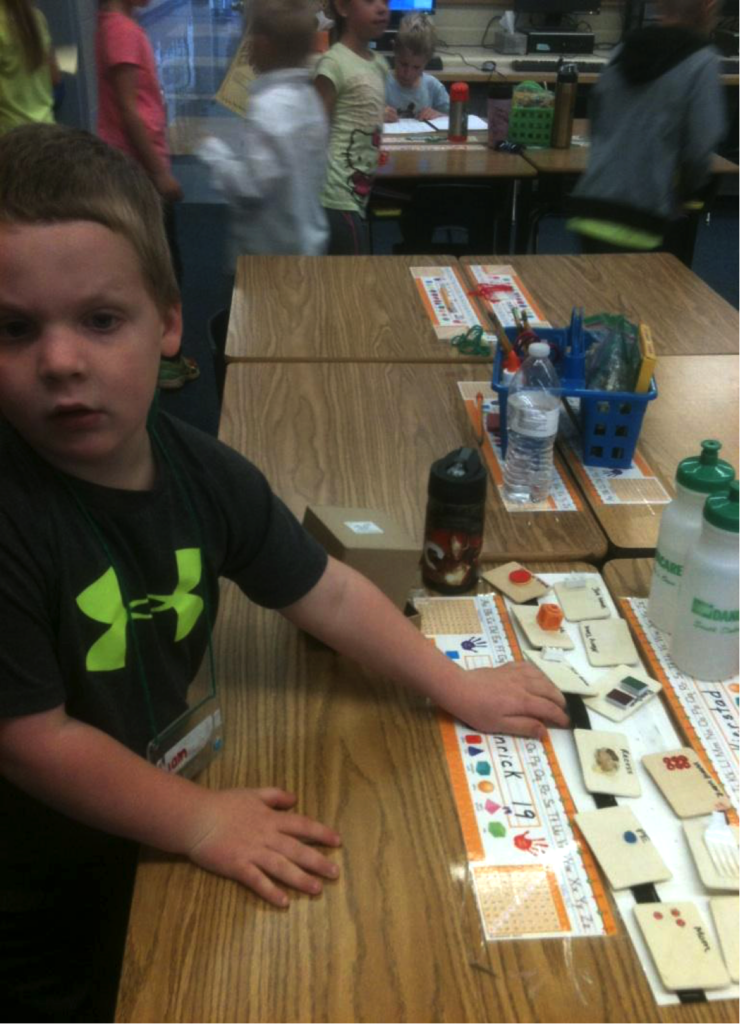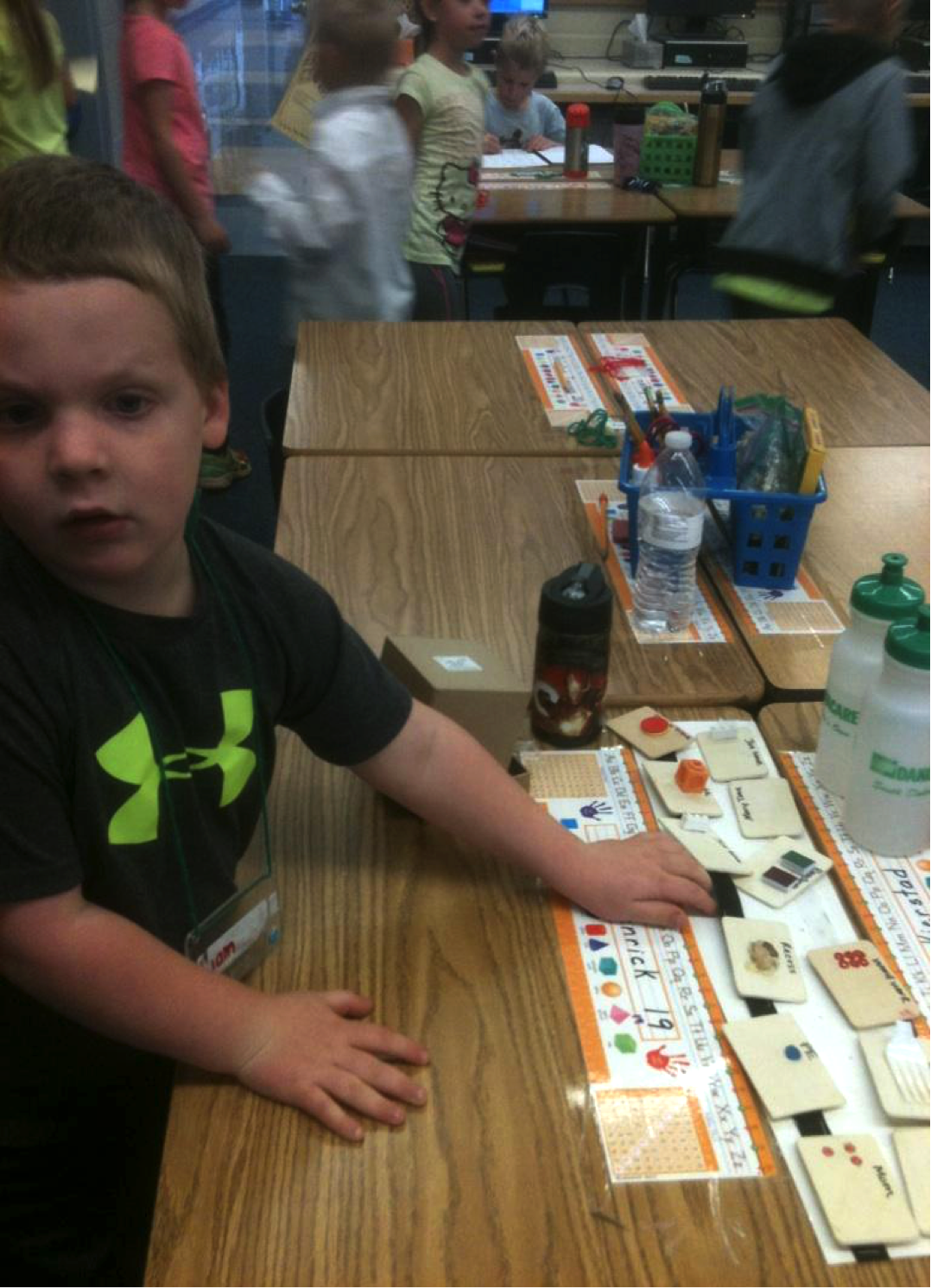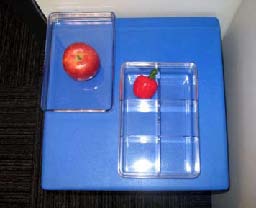My son Liam is a first grader in a mainstream classroom and he happens to be deafblind. I created a tactile daily schedule that is attached to the top of his desk. It includes two rows: the top row is for morning activities and the bottom row is for afternoon activities. In the morning he enjoys placing all of the objects on the schedule for the day. We use velcro strips for the rows and pieces of velcro on the back “activity squares”. After each activity is completed, he takes it off of the schedule and puts it in a finished box. His object symbols mostly include pieces of real life objects. Ex: Playground rocks for recess, plastic fork for lunch, Piece of a rubber ball for gym class, etc. With objcts symbols paired with braille we will eventually we will be able to fade out the object symbols and use braille only.
I searched different ideas for a desk schedule for my son on Pinterest and also researched ideas in the text “Calendars for Students With Multiple Impairments Including Deafblindness“. Desk schedules can be modified to fit the needs of all children with vision impairments. You may want to include more or less ‘activities’ depending on the level of your child. There are many different ways to organize the schedule as well.
Routine/procedure:
Liam has a box that is stored in his desk that has all of the wooden squares that have the main daily activities on them. First thing in the morning, Liam and his intervener/interpreter discuss what will be happening in the morning up until lunch and then also in the afternoon up until “mom picks Liam up”. His interpreter will sign to him which “activity” to find first, then second, etc. He will then find each square, independently, out of the box and place it onto the desk schedule. For example, if the first activity is math he would find the “math square” and place it on as the first activity. If the next activity is reading, he would find the “reading square” and place it next to the “math square”, etc. When each activity has “finished”, he will take that activity square off of the schedule and put it in the “finished box”. At the end of the day his desk schedule will be empty and ready for the next day. The great thing about a desk schedule is that it can inspire conversation. You can discuss what will happen next or later (think of the great “time” concepts and vocabulary that could be taught!). You could also go back into the “finished box” and discuss things that happened throughout the day. Symbols could be used in helping to create a story or to send home to help tell “mom” what happened at school that day.

More information:
Here is a link to some more information on different ways to create a schedule system and the importance of putting a system in place: Calendar Boxes and Schedule Systems as Literacy Tools.






